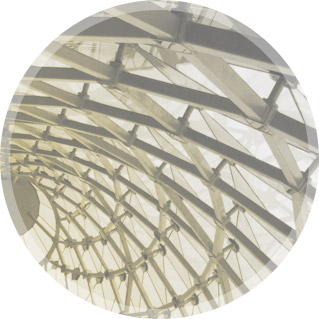University of Virginia
School of Architecture

Setting
The University of Virginia is distinctive among institutions of higher education. Founded by Thomas Jefferson in 1819, the University sustains the ideal of developing leaders, through education, who are well prepared to help shape the future of the nation. It is consistently ranked as one of the strongest public universities in the country. The University is renewing its commitment to the Fine and Performing Arts with current plans for a new arts precinct.
School Philosophy
Design is the central mode of inquiry in architecture. Graduate and undergraduate students investigate vital issues that shape our built environment, representing their ideas through design. Design interprets the past and projects an ethical future for urban and rural landscapes. Students are immersed in a studio culture that values the artful making of inventive physical and digital representations of cities, buildings and landscapes. Students have the advantage of a close affiliation with Landscape Architecture, Architectural History and Planning. We endeavor to provide students with the skills needed to assume leadership roles in architecture and other disciplines that engage the physical environment.

Programs
The Bachelor of Science in Architecture Program is a rigorous pre-professional curriculum with a strong liberal arts component. The prime objective of the first three years is to provide a framework for the study of contemporary culture through observation, analysis, and design of the built environment. This exploration uses design as a mode of critical inquiry from the scale of the city to the scale of the hand while maintaining its focus on the value of this effort to the community and the land, both immediate and extended. The curriculum is based on the foundation of a liberal arts education formed broadly during the first two years of study, while subjects directly related to making architecture are pursued in the third year. Students entering the Program in Architecture follow one curriculum for their first three years. Starting in their second year, the strategic choices of electives, minors and concentrations will prepare the student to pursue a variety of disciplines and careers at the graduate level. The Master of Architecture curricula emphasize strong foundation studies in design with support courses in architectural history, theory, building, and technology. To gain a broader understanding of the relationships within and parallel to the field of architecture, students take courses in Architectural History, Landscape Architecture, and Urban and Environmental Planning. The Department is committed to the development of architectural pedagogy and upper-level graduate students are encouraged, through an optional teaching elective, to expand their knowledge by serving as teaching assistants to undergraduate design, theory or technology courses. The Master of Architecture Program attracts a diverse range of students with undergraduate degrees in liberal arts as well as architecture. After an introductory summer session, students with liberal arts degrees typically complete their courses in six semesters, while those with pre-professional degrees frequently gain advanced standing. A two-semester Master of Architecture Post-Professional Degree Program, directly tailored to the interests of each student, is available for those with an undergraduate professional degree in architecture. Students who wish to obtain the Master of Architecture degree should have at least a 3.0 cumulative grade point average with a 3.5 average in design studios. Admission to the Master of Architecture programs is extremely competitive.

of Focus
1. Building Technologies
2. Community Design
3. Design/Build
4. Digital Fabrication & Technology
5. Digital Design & Visualization
6. History | Theory | Criticism
7. Public Health
8. Urbanism

Opportunities

Facilities

Policies
Transfer Policies
Transfer Students
Applicants who have completed at least one full year (at least twenty-four semester hours after high school graduation) of college study before entering the University are considered most competitive by the Committee on Admission. Summer is not considered part of this one year minimum. Transfer students who enroll at UVA must spend at least two full years in residency at the University.
Transfer candidates must be in good standing, both academically and socially, at the institution or institutions they have attended. Successful applicants ordinarily will have earned a cumulative grade point average of B or better at their previous colleges; they also will have completed, or come close to completing, the specific transfer requirements for the school and program they wish to enter. We require submission of ALL previous college and high school transcripts
Students are ordinarily admitted only for the fall semester. A limited number of transfer students are admitted to the College of Arts and Sciences, Architectural History, and Urban and Environmental Planning for the spring semester. Students interested in spring admission must have 24 credit hours earned and completed by the end of the fall semester preceding the desired spring semester. It is highly unlikely that a student in the first year of college would be permitted to apply as a spring transfer applicant.
Admission is granted to individual schools and not specific departments or majors within the schools. Please review coursework that should be completed prior to matriculation to each school.



